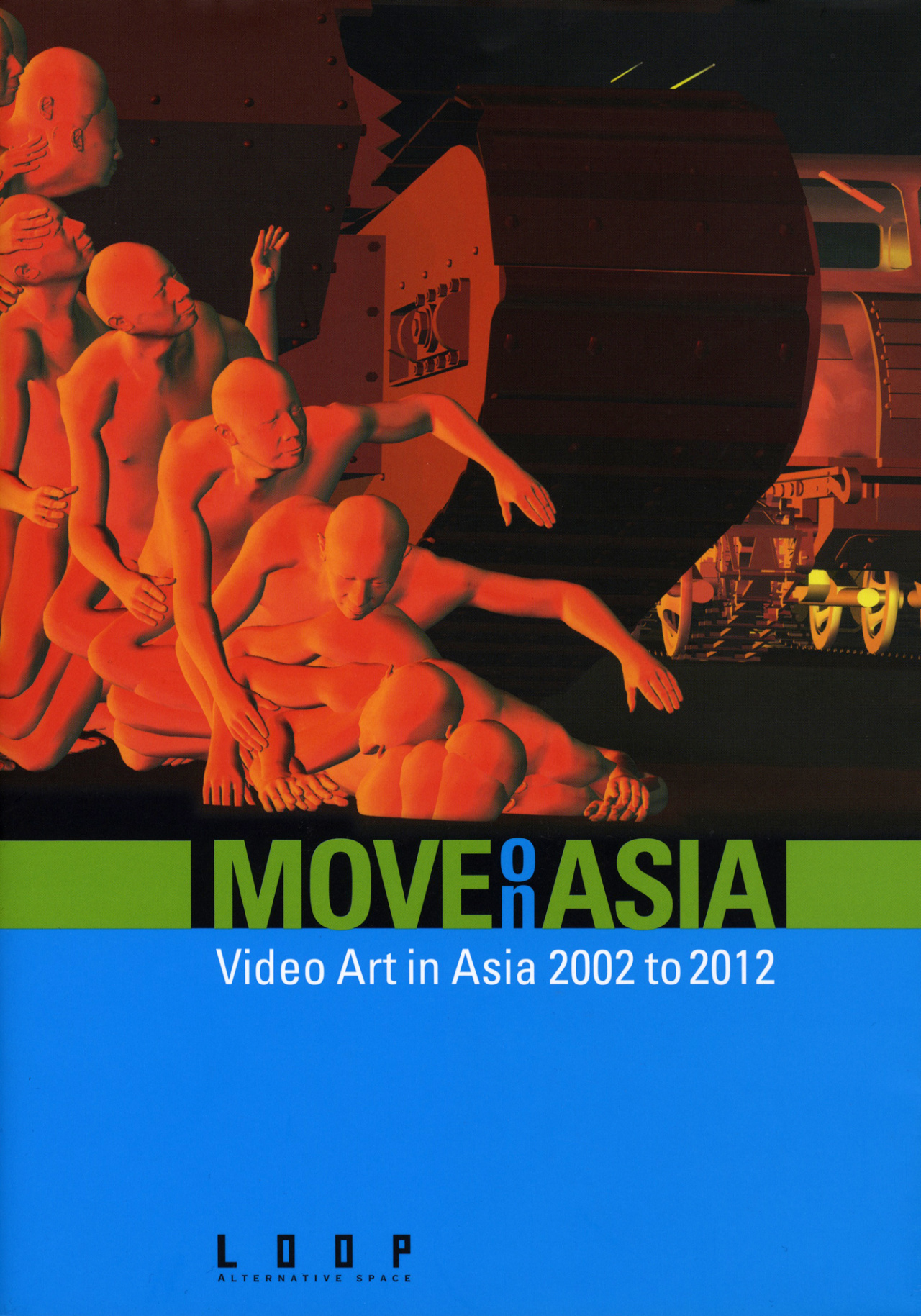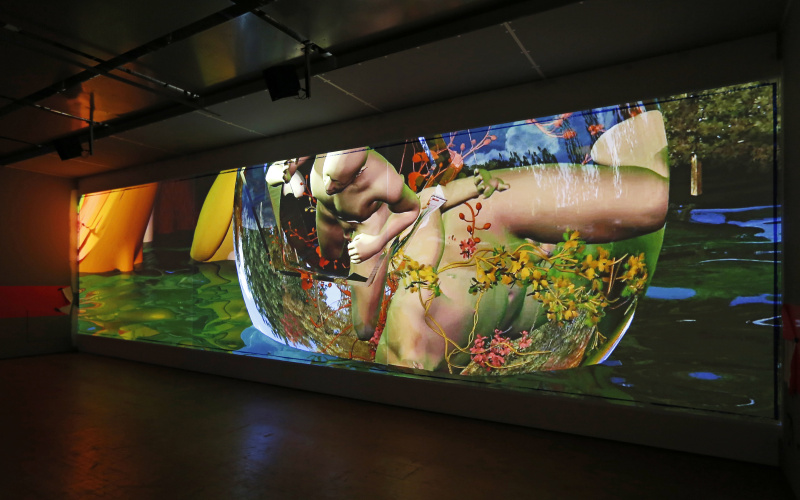- Exhibition catalog
- Anthology
Move on Asia
Video Art in Asia 2002 to 2012
2012
- Type of publication
- Exhibition catalog
- Anthology
- Author / Editor
- Yeran Jang and Jihye Kim (Eds.)
- Publishing house, place
- Alt. Space Loop, Seoul
- Physical Description
- 541 p. : numerous ill.
- Language
- English
- Year
- 2012
- ISBN
- 978-89-963389-3-2
- Content
Asia on the move, Asia agitated, Asia moving ... the many associations evoked by the title of the exhibition »Move on Asia. Video Art in Asia 2002 to 2012« allude to Asia's increasing significance in global contemporary art. From February 2013 onwards, fifty years alter the emergence-of video art, the exhibition »Move on Asia. Video Art in Asia 2002 to 2012« at ZKM | Karlsruhe will present more than 140 works from 13 Asian countries offering a unique insight into the latest trends in the use of this medium.
While in the course of global change and ever-recurring crises the West still attempts to preserve its economic and cultural dominance, throughout Asia there is a noticeable economic upturn, reflected in a new discourse in contemporary Asian art that cuts across all genres. Its focus is not on upholding and preserving past values, but on regaining, appropriating, reshaping and constantly creating – the guiding principles that have led new Asian art to free itself from its former role models in the West and achieve a new independence. The Asian artists' searching and positioning in a globally networked world transcends all local cultures and can be considered a new move in the interaction between these different cultures. It is Asia's move now, so another reading of the exhibition title would suggest.
Technically generated reflections of our desire for reality have triggered a whole raft of new realities, in Asia, as everywhere else. Hence, artists make experimental use of both self- and prefabricated images, ranging from street scenes shot spontaneously on mobile phones to appealing, high-gloss images from the respective state TV channel. In their works, they document, stage and process the omnipresent iconoclash. In a paradoxical world, their search is for a new position and certainty, combined with the playful or even desperate attempt to preserve traditions while creating their own opposition to the dominant system.
In most Asian countries government censorship has less prevented the production of critical pieces rather their presentation. Not only in communist Vietnam, but also in the new China with its capitalist thrust and in many other countries, exhibitions have to be approved by the authorities who also exert unchallenged censorship over public media. In all these countries the state version of history prevails over actual personal experience and interpretation. The omnipresent power of the authorities combines with pre-emptive self-censorship and multiple attempts to anticipate the works' reception in the Western hemisphere. A potential-way out of this dilemma: highly developed artistic skills that render undesired criticism visible, between the lines as well as in electronic networks, for all to see. This again meets with approval in the West.
Until the new millennium video as an artistic genre was always considered part of the Western world, despite having several Asian protagonists. But over the last two decades there has been a great deal of development in independent video cultures across Asia. While flourishing festivals, biennials and art fairs have made a few selected Asian artist-heroes familiar to a global audience, we must also explore local art scenes and find out about the artists who have not become household names. While the big names boost the fantasy of the global art market, and prices too, a critical creative discourse tends only to evolve underground in these countries.
The selection of works for »Move on Asia« is based on the major eponymous festival of moving digital images in Asia, which began in 2004 and is organized by a network of 20 curators and 40 video artists. The exhibition is a collaborative project with the Alternative Space LOOP in Seoul (Korea) and presents video art from China, Hang Kong, India, Indonesia, Japan, Republic of Korea, Pakistan, the Philippines, Singapore, Sri Lanka, Taiwan, Thailand, and Vietnam.
In connection with the exhibition there will also be an interactive installation: »Global Fire« was created by Chinese artist Du Zhenjun who is now based in Paris. It features a huge inflated dome in which visitors can hold lighters to heat sensors setting the flags of 200 different nations on fire.
Moreover, the interactive video installation »40+4. Art is not enough! Not enough!« will be on show at the ZKM's Panorama-Labor. A joint venture by curator Davide Quadrio, filmmaker Lothar Spree and video artist Xiaowen Zhu, the work features interviews with 40 artists who live and work in Shanghai, highlighting the role of the artist in his/her immediate context, the social impact oft he artworks, and the effect an international market has on the traditional forms of artistic output. Furthermore Sascha Pohle reflects the conditions of production in the Chinese art copying industry with his work »Reframing the Artist«. The sound dome of ZKM | Institute for Music and Acoustics presents sound works of Shintaro Imai, Hiromi Ishii, Chikashi Miyama, Junya Oikawa, Pei-Yu Shih, Kotoka Suzuki, Kumiko Omura, and Yong-Joon Yang.
In 2007 ZKM | Karlsruhe hosted »New Asian Art. Thermocline of Art«, an exhibition which was curated by Wonil Rhee and dedicated to “discovering a new continent of art”. Six years after that panoramic show, which received great international acclaim, the field of audiovisual arts in Asia demands that we pause once again to recognize new trends and approach the topic in greater depth.

